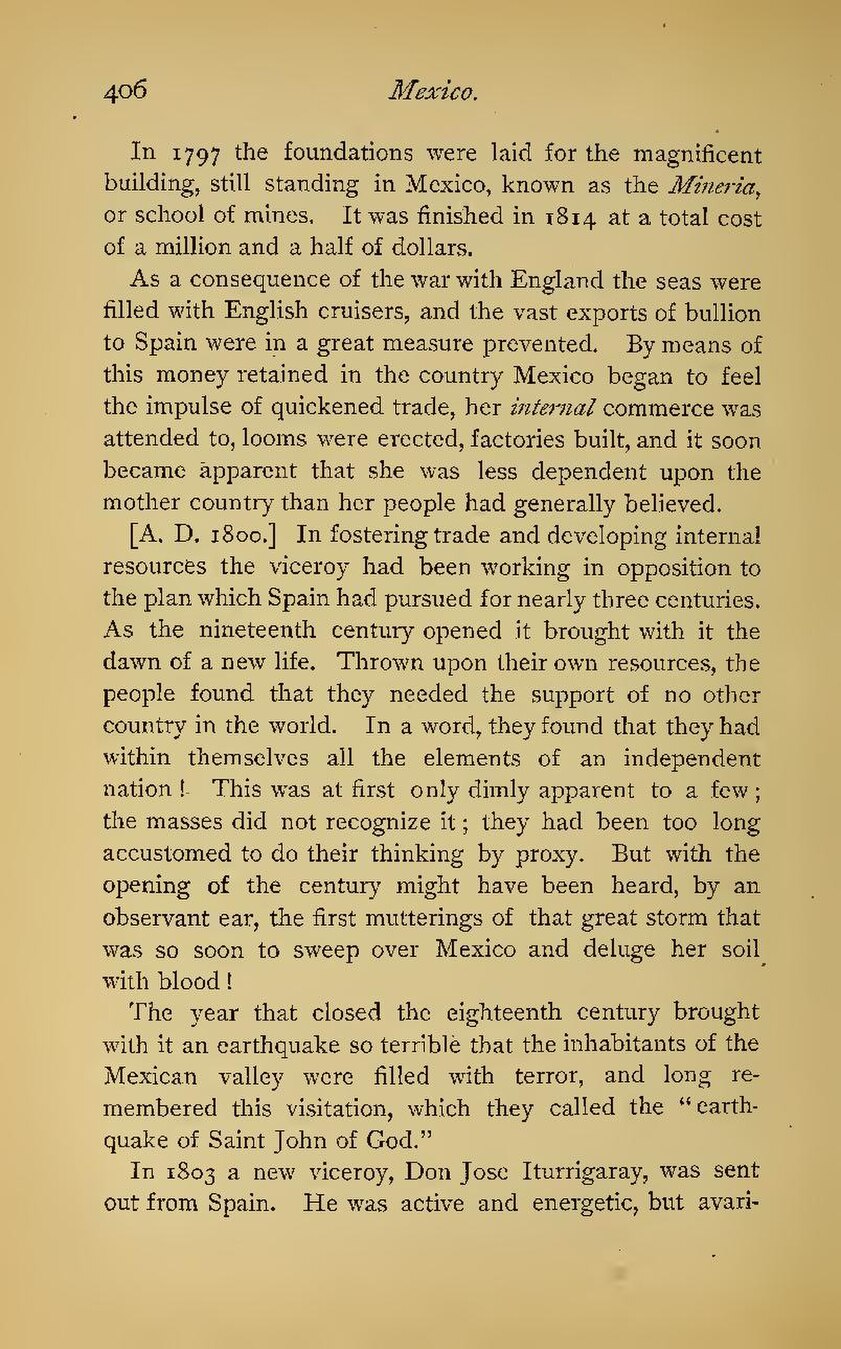In 1797 the foundations were laid for the magnificent building, still standing in Mexico, known as the Mineria, or school of mines. It was finished in 1814 at a total cost of a million and a half of dollars.
As a consequence of the war with England the seas were filled with English cruisers, and the vast exports of bullion to Spain were in a great measure prevented. By means of this money retained in the country Mexico began to feel the impulse of quickened trade, her internal commerce was attended to, looms were erected, factories built, and it soon became apparent that she was less dependent upon the mother country than her people had generally believed.
[A. D. 1800.] In fostering trade and developing internal resources the viceroy had been working in opposition to the plan which Spain had pursued for nearly three centuries. As the nineteenth century opened it brought with it the dawn of a new life. Thrown upon their own resources, the people found that they needed the support of no other country in the world. In a word, they found that they had within themselves all the elements of an independent nation! This was at first only dimly apparent to a few; the masses did not recognize it; they had been too long accustomed to do their thinking by proxy. But with the opening of the century might have been heard, by an observant ear, the first mutterings of that great storm that was so soon to sweep over Mexico and deluge her soil with blood!
The year that closed the eighteenth century brought with it an earthquake so terrible that the inhabitants of the Mexican valley were filled with terror, and long remembered this visitation, which they called the "earthquake of Saint John of God."
In 1803 a new viceroy, Don Jose Iturrigaray, was sent out from Spain. He was active and energetic, but avari-
